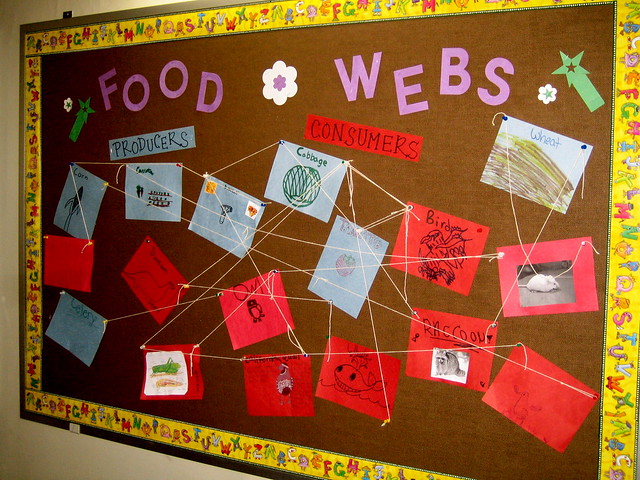Displaying science on classroom bulletin boards
By Mary Bigelow
Posted on 2011-01-05
 I teach science to fifth and sixth graders. I have a separate classroom equipped as a lab. It’s an ideal situation, but as a new teacher, I’m struggling to keep up with everything. It may sound trivial, but I am concerned about my bulletin boards. In other classrooms, the teachers have amazing displays. My room looks drab in comparison. Do you have any suggestions for brightening it up?
I teach science to fifth and sixth graders. I have a separate classroom equipped as a lab. It’s an ideal situation, but as a new teacher, I’m struggling to keep up with everything. It may sound trivial, but I am concerned about my bulletin boards. In other classrooms, the teachers have amazing displays. My room looks drab in comparison. Do you have any suggestions for brightening it up?
—Morgan, Charleston, West Virginia
For a new teacher, no concerns are trivial, although some are more important than others. As a departmentalized science teacher, your most important responsibility is to provide inquiry-based learning experiences for your students. These experiences (especially with two grade levels) take time to plan and evaluate. You are also responsible for equipment inventories, lab maintenance, and safety. So you can be forgiven if elaborate bulletin boards have a lower priority.
On the other hand, science is an interesting subject, so your lab does not have to be “drab.” You can set up a table with materials related to your current topics for students to examine (e.g., shell collections, animal bones, rock samples, weather maps, simple machines). Hand lenses and microscopes invite students to explore. A display of science trade books can brighten up a corner and encourage students to browse and learn.
On your bulletin board, post the lab safety rules prominently (and permanently). Set off a small space for “For Your Information” notices (e.g., fire drill evacuation map, the school calendar). Then divide the rest of the bulletin board space between the two grades. Color code the information or use different colored backgrounds for each grade (wrapping paper or wallpaper does not fade, and you can keep the same background all year—or even several years). I found that the most effective bulletin boards were those created with student materials (or by the students themselves) and whose content served an instructional purpose:
- For each grade, you could include a “word wall” with the key vocabulary for the unit. Refer to it often during class discussions or writing assignments. As you introduce a new word, ask a student to create a card with the word and post it on the wall. The cards can be taken down and used during review games, too.
- Save some space to display student work. It should be ungraded, but you can use sticky notes to draw attention to specific look-fors: “Note how Jason organized his data.” “What can we learn from Maria’s graph?” “Is this an observation or an inference?” Throughout the year, try to display work from as many students as possible.
- Post the “big idea” or theme of the unit, outlining the topics and activities. Refer to it often to remind students of how the activities and discussions are connected.
- Include the rubrics for lab reports, science notebooks, or other projects. Ask a few students to illustrate them.
- During a discussion or activity, use a section of a bulletin board for students to post “I wonder….” questions to be addressed at a later date.
- Print magazines and the internet are great sources for pictures related to your current units. In addition to their decorative value, these pictures can be used to stimulate discussions or as part of writing prompts (e.g., compare and contrast, predict, describe) or activities in classification. My school did not have a laminator, so I used plastic sheet protectors to display them. These protectors are less expensive than laminating film, and they are reusable.
- Display some of your own photographs related to the topic and encourage students to share their photos or to bring in related pictures or news articles. Students also enjoy seeing pictures of their teacher in science-related venues and activities.
Some of your colleagues’ bulletin boards are the result of many years of experience—they’ve been collecting resources for a long time. The school may have some parent or community volunteers who assist with bulletin boards.
If you have the opportunity to attend a science conference, the vendors have posters and other materials you can bring back. Take your digital camera with you wherever you go—you never know when you’ll see a photo opportunity (an alternative energy source, an interesting cloud formation, a rock outcrop, or unusual plants). When you have a display that is particularly effective, take a photo. Put the picture and other materials in an envelope and keep it with the unit materials so you can recreate it next year. You’ll soon have your own science-related, amazing displays.
Photograph: http://www.flickr.com/photos/kissyface/2287122313/
Disclaimer: The views expressed in this blog post are those of the author(s) and do not necessarily reflect the official position of the National Science Teaching Association (NSTA).

